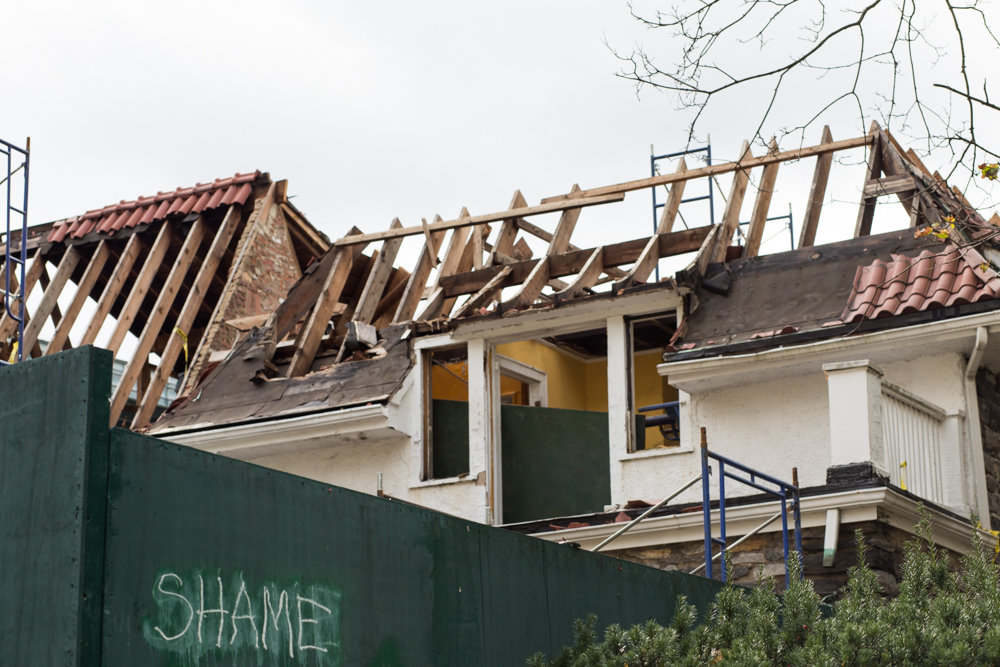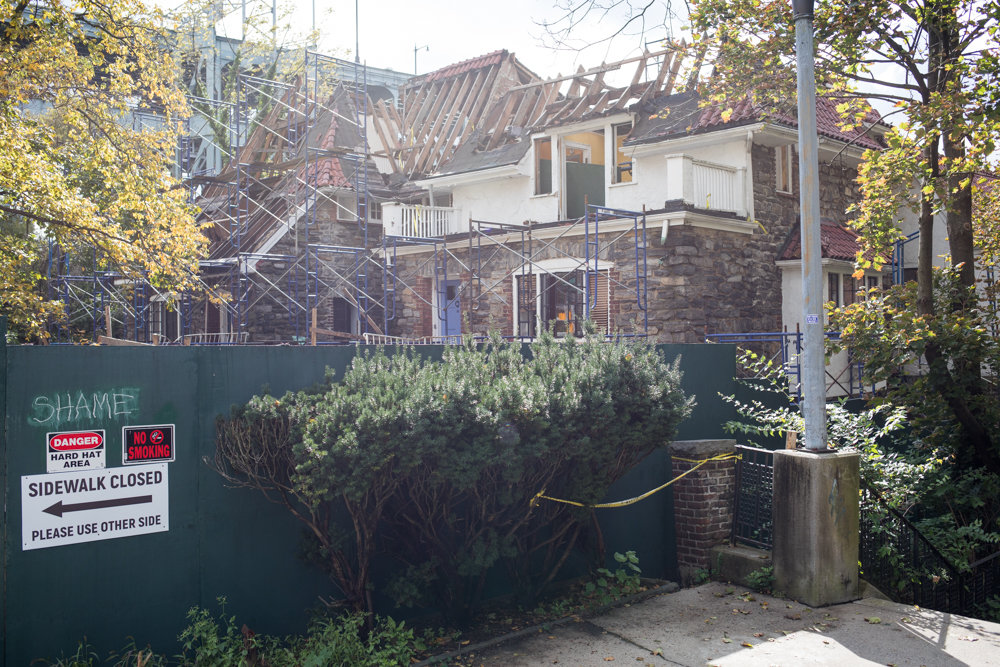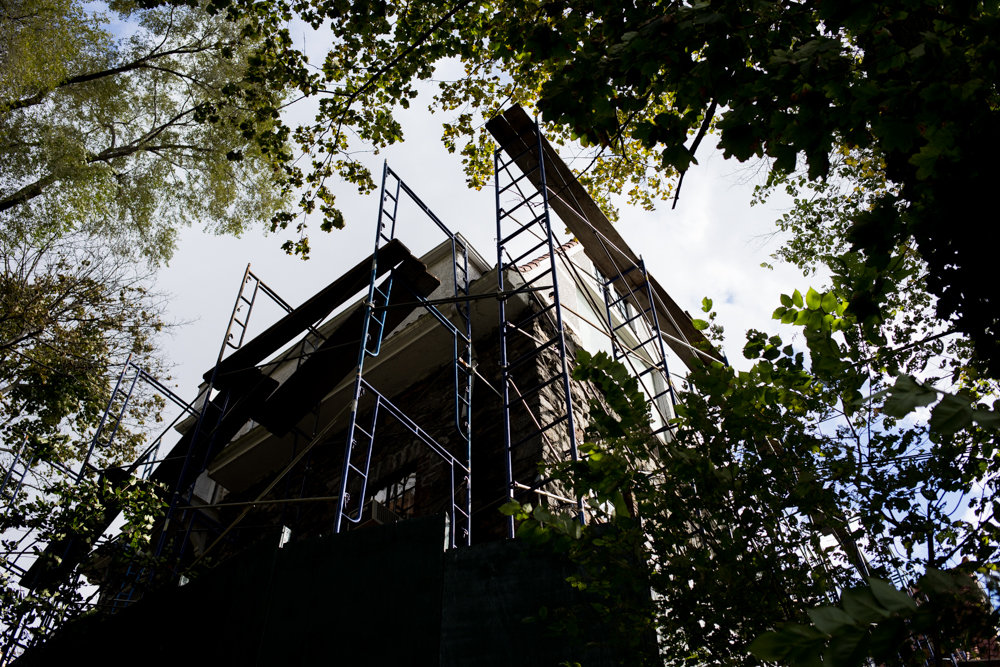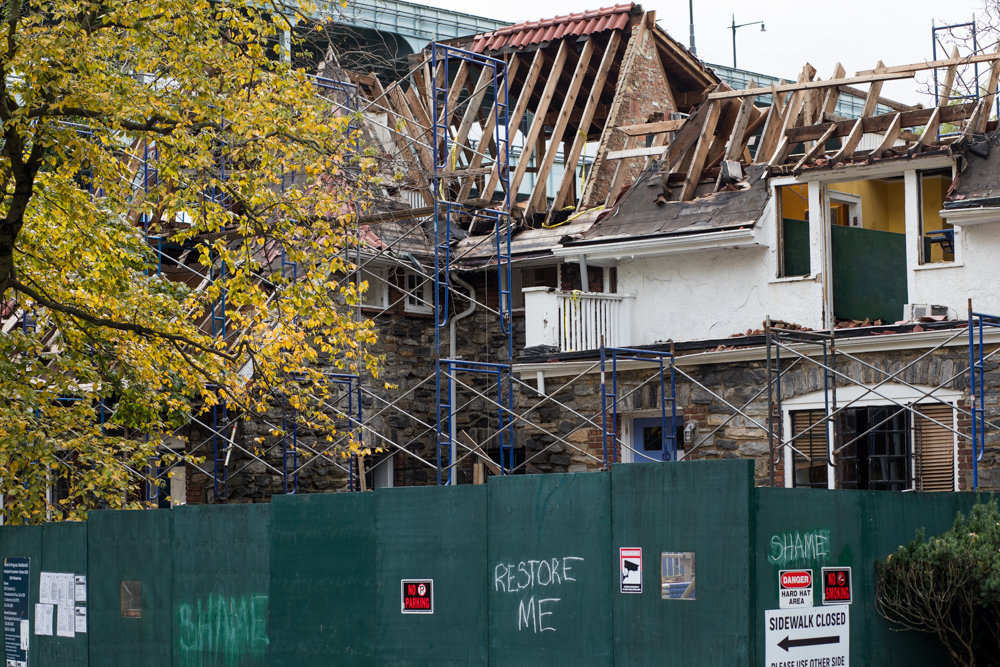Bridge could torpedo developer's plans
More than 100 people showed up to Community Board 8’s land use committee meeting last week to protest the proposed demolition and apartment building construction where the nearly century-old Villa Rosa Bonheur sits in pieces.
But not Charles Moerdler, the committee’s long-time chair. Instead, he was in Israel, welcoming the newest (and youngest) member to his family. Yet, that rare absence didn’t stop Moerdler from doing his part to slow down plans to build up to seven stories and 55 units at 2395 Palisade Ave.
And it’s all thanks to geography — like how close Villa Rosa Bonheur is to the massive renovation project that is the Henry Hudson Bridge.
“They are in the process of replacing all the columns in the upper area as well as rebuilding all of the retaining walls,” Moerdler said of the $86 million project. “This is major, major, major, major work, critical to long-term safety.”
But it also could hamper any projects nearby — like residential construction that might impact rock formations shared with the bridge.
That’s why Moerdler, putting on his hat as chair of the Metropolitan Transportation Authority’s bridges and tunnels committee has asked his engineering staff to review the proposed demolition and construction. And it might be just enough to bring the entire project to a halt — temporarily.
“The idea that somebody, without notifying anybody and without giving a damn about anybody, would blast and do whatever they have to do with respect to the rock formation which the bridge is anchored is unacceptable,” Moerdler said. “So I have asked the bridges and tunnels engineers to take a look at this, and they are very much on top of this now. They’ll likely hold up plans until they have done a thorough examination.”
The 2395 Palisade property has been the subject of controversy since demolition crews arrived at the 1920s-era building last summer. Original permits allowed for a complete gutting of the structure, with plans to turn what were seven apartment units into 11. But when pieces of the building’s iconic roof started coming apart, neighbors got angry.
Since then, the development team behind the project — identified in city-filed permits as Timber Equities — has said they now plan a complete demolition of the building, with the hopes of building a higher-density project there. Because of how the property is zoned, such a project, they say, can be built as-of-right.
Neighbors, however, fear that asbestos likely found inside the building could create a hazard for anyone near the construction site, and that the developer has not done enough to keep that area safe.
“Our as-of-right project will provide approximately 50 new rent-stabilized apartments for middle-income households, and unlock city-owned public open space for the Riverdale community,” said project spokesman Sam Spokony, in a written statement. “All of our work onsite is being done in compliance with all relevant permits and safety regulations governed by the city and state agencies. Any unsubstantiated claim to the contrary is irresponsible.”
Spokony also added the development team is not too concerned about Moerdler’s involvement with the MTA, and have hired Sam Schwartz Engineering to work with transit officials.
“Sam Schwartz understands the relevant requirements and has a good record of satisfying bridges and tunnels with a goal of their signing off on the project,” Spokony said.
The developer spokesman did not specifically address questions about reported debris on a nearby step street leading to the Spuyten Duyvil Metro-North station, but one neighbor — Lew Wunderlich — told Councilman Andrew Cohen’s chief of staff Ariana Collado in an email that he found debris scattered all over the property, uncovered, he fears could contain both asbestos and lead.
“The site, as it exists today, poses a significant hazard to both human health and the environment,” said Wunderlich who, according to his social media profile, is an environmental construction manager at MTA. “The public is being exposed to fugitive dust emissions, potentially laced with asbestos and lead paint residue from this 94-year-old structure. The adjacent step street that provides Metro-North access for daily commuters is dangerously close to construction fencing and building perimeter scaffolding.”
At last week’s land use meeting, Christine Keegan told committee members that something needed to be done about potential health hazards at the site immediately.
“My concern — and I am a nurse — is the asbestos,” Keegan said. “If the roof has started coming off, and if there is asbestos in there, then it’s blowing all over the place. It should be checked tomorrow, and it should be shut down.”
In fact, some residents demanded Diane Cahill — who represented the developer at the meeting — have a tarp installed over the exposed roof. Spokony, however, told The Riverdale Press that such a measure simply would not have worked.
“There was no tarp placed on the structure because, per the guidance of our consultant, it is not code-required and would actually have been inadvisable and unsafe to install on the site,” he said.
Since demolition began, more than a dozen complaints against the property have been recorded, according to the buildings department, and work crews have received violations, including one issued Aug. 23 accusing the developer of performing work that doesn’t conform to existing permits, without going into specifics.
A hearing was scheduled for Oct. 19, but the violation itself is still listed as “open” as of late last week.
With plans seemingly in continuous flux, it might be impossible to appease neighbors about this project — exactly what Este Gardner told Cahill at the land use meeting.
“As you can really tell, people are so upset,” Gardner said. “We don’t feel that we can trust you.”















